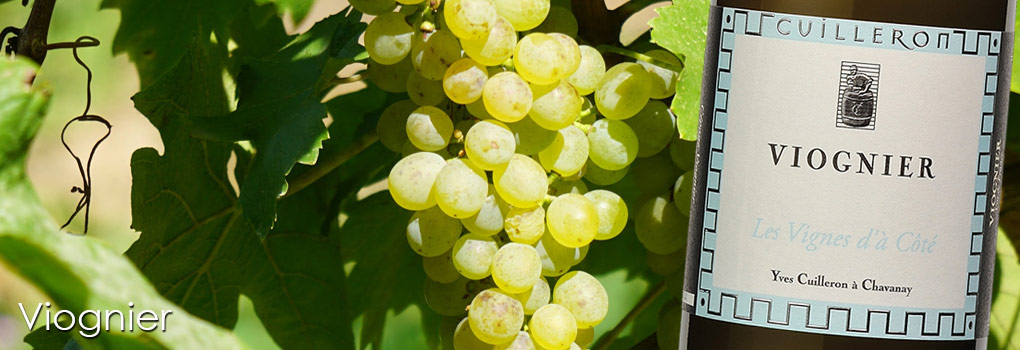The following wine grapes ‘Vitis vinifera’ have their origins in France and have been instrumental in the style, character and quality wines crafted in their well-known wine regions. Yes, many of these varietals have found new homes across the globe, the following are brief insights into their personality and influence on the world of wine.
CABERNET FRANC:
Cabernet Franc is one of the most widely planted red grape varietals in the world. Plantings can be found across Europe, the New World and in China. In many wine regions, it is planted as a component of a Bordeaux-style blend, playing a supportive role to Cabernet Sauvignon and Merlot. In parts of north-east Italy and the right bank region of Bordeaux, Cabernet Franc both plays a more prominent role in blends and is made as a single varietal.
Cabernet Franc with its lower tannin levels than Cabernet Sauvignon, can make a bright red wine, with contributing finesse and a peppery aroma to blends with more robust grape varietals. Depending on growing conditions and style of wine, additional aromas can include tobacco, blueberry, raspberry, cassis and sometimes even violets.
Cabernet Franc is believed to have been established in the Libournais region of south-west France sometime in the 17th century. In 1997 DNA research showed that Cabernet Franc crossed with Sauvignon Blanc to produce Cabernet Sauvignon.
Cabernet Franc is very similar to Cabernet Sauvignon, but it buds and ripens at least a week earlier. This trait allows the vine to thrive in slightly cooler climates than Cabernet Sauvignon. In Bordeaux, plantings of Cabernet Franc are treated as an 'insurance policy' against inclement weather close to harvest that may negatively affect Cabernet Sauvignon vines.
Its early budding does pose the viticultural hazard of coulure early in the growing season. The vine is vigorous and upright, the berries are quite small and blue-black in colour, with fairly thin skins. The Cabernet Franc grapevine is more prone to mutation than Cabernet Sauvignon, though less so than Pinot Noir.
Cabernet Franc can adapt to a wide variety of soil types but seems to thrive in sandy, chalky soils, producing heavier, more full-bodied styles of wine. This grape is highly yield sensitive, with over-cropping producing wines with more green, vegetative notes. More recently producers have been selling Cabernet Franc as a single varietal with significant success.
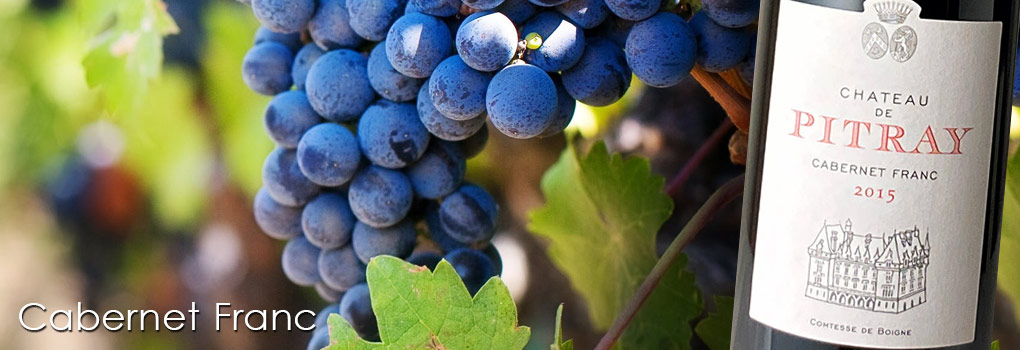
CABERNET SAUVIGNON:
Cabernet Sauvignon is the premier red wine grape varietal in the world - nicknamed 'the king of red wine grapes'. Cabernet Sauvignon is the dominant grape in the Bordeaux wine region of France and has spread to every other major growing region from Italy, Canada, South America, South Africa, Australia and New Zealand to name just a few.
The Cabernet Sauvignon grape produces distinctive red wines that are high in tannins and can have a long aging potential. It is usually blended with other red varietals like; Merlot, Cabernet Franc, Petit Verdot and Malbec (the famous five) to make wines with increased complexity and character. Cabernet Sauvignon is a small, dark, thick skinned grape varietal that gives average crop yields, and is a late-ripening varietal.
It needs slightly warmer growing conditions than many other red varietals in order to achieve physiological ripeness. Despite its prominence in the wine industry, the grape is a relatively new varietal, the product of a chance crossing between Cabernet Franc and Sauvignon Blanc during the 17th century in Bordeaux, south-western France.
Cabernet Sauvignon taste characteristics can include: dark cherries, cedar, tobacco and blackcurrants, and cool climate conditions can give green peppers or olive aromas on the nose. Lengthy aging in small oak barrels before bottling is common for Cabernet Sauvignon in order to achieve more palate depth, structure and complexity.
The grapes popularity is often attributed to its ease of cultivation - the grapes have thick skins, which contributes to the grapes notoriously high tannin levels, which soften and mellow with aging. The vines are also hardy and resistant to rot and frost - and to its consistent presentation of structure, mouth feel and full flavours which express the typical character ('typicity') of the varietal.
Familiarity and ease of pronunciation (shortened to just Cabernet, or Cab-Sav) have helped to sell Cabernet Sauvignon wines to enthusiasts the world over, even when from unfamiliar wine regions. When you think of the finest red wines produced around the world, you are often thinking of wines which have been crafted with Cabernet Sauvignon.
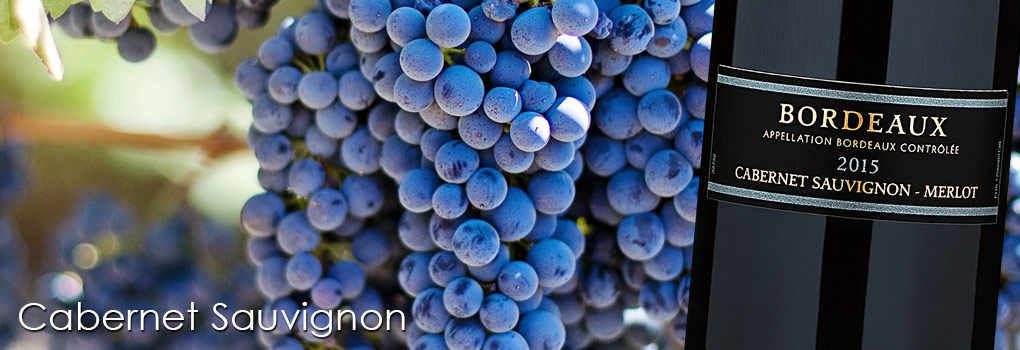
CHARDONNAY:
Chardonnay is a white wine grape varietal used to make quality wine. This is the grape of the world's greatest and most expensive white wines. It is believed to have originated in the Burgundy wine region of central France, but is now planted and grown wherever good wine is produced, from Chile to Italy and from South Africa to New Zealand.
For new and developing wine regions, growing and producing a Chardonnay wine is seen as a 'rite of passage' and an ideal offering and introduction to the international wine market. Chardonnay is relatively easy to grow in a wide range of climates and soils (thriving in poor, stony, chalky, clay-limestone soils) and although resistant to molds and cold weather this early ripening grape varietal is prone to frost damage.
The Chardonnay grape itself is very neutral, with many of the flavours commonly associated with the grape being derived from such influences as 'terroir' and 'winemaking techniques'. Because of its 'non-aromatic' personality, Chardonnay responds well to winemaker influences: oak aging, the practice of extended skin contact, barrel fermentation, part & full-malolactic fermentation, lees stirring etc..., which will influence the final wine style.
Chardonnay is crafted in many different styles, from the elegant, 'flinty' wines of Chablis to rich, buttery Meursault's and New World wines with tropical, stone fruit flavours. It is capable of producing high sugars (and therefore alcohol) although these develop slowly in cool climates, just as acid levels can fall rapidly in hot climates. Chardonnay is an important component of many sparkling wines around the world, including Champagne. A peak in popularity in the late 1980's through until the mid 1990's gave way to a backlash among wine drinkers (in a few markets) who had been exposed to over worked and over oaked styles that were intensely out of balance. Nonetheless, it remains one of the most widely-planted grape varietals worldwide and planted in more wine regions than any other grape varietal.
Note: Remember not to serve Chardonnay too chilled; unoaked styles 8°- 10°C, and oaked styles can be enjoyed from 10°- 12°C. For more info on serving temperatures: CLICK HERE
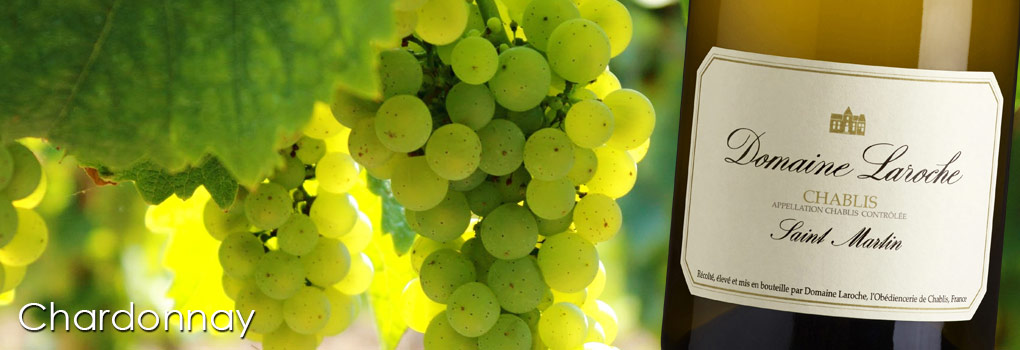
CHENIN BLANC:
Chenin Blanc is a white wine grape varietal from the Loire Valley of France - and is the wine region most closely associated with the varietal. Chenin Blanc is an authorized planting in many AOP wine regions but is mostly planted in the Middle Loire AOPs of Anjou, Bonnezeaux, Crémant de Loire, Coteaux de l'Aubance, Coteaux du Layon, Jasnières, Montlouis, Quarts de Chaume, Saumur, Savennières, and Vouvray.
Chenin Blanc probably originated as a mutation of the Pineau d'Aunis (Chenin Noir) in Anjou - and is one of the world's most versatile grapes. Its high acidity means it can be used to craft everything from sparkling wines to well-balanced dessert and fortified wines, although it can produce very bland, neutral wines if the vine's natural vigour is not controlled.
Outside of the Loire Valley wine region, Chenin Blanc can be found in many of the New World wine regions, even here in New Zealand (though today only in small volumes) - and it is the most widely planted grape varietal in South Africa, also known as Steen. Chenin Blanc was often misidentified in Australia, so tracing its early history in the country is not so easy, though it was probably introduced by James Busby.
The climate of a wine region will dictate whether Chenin Blanc is produced in a predominately dry or sweet style, while the vineyard soil type will generally influence the overall style of the wine. In cool areas the juice is sweet but high in acidity with a full-bodied fruity palate. In the unreliable summers of northern France, the acidity of under ripe grapes are made into popular sparkling wines such as Crémant de Loire.
The white wines of the Anjou AOP are perhaps the best expression of Chenin as a dry wine, with flavours of quince and apples. In nearby Vouvray they make an off-dry style wine, which develops honey and floral characteristics with age.
The aromas and flavour characters of Chenin Blanc often include the descriptors of mineral, greengage plum, angelica and white honey. New World styles of Chenin Blanc, like those of South Africa, are more often made to be consumed young and exhibit rich tropical fruit notes such as banana, guava, nashi pear and pineapple.
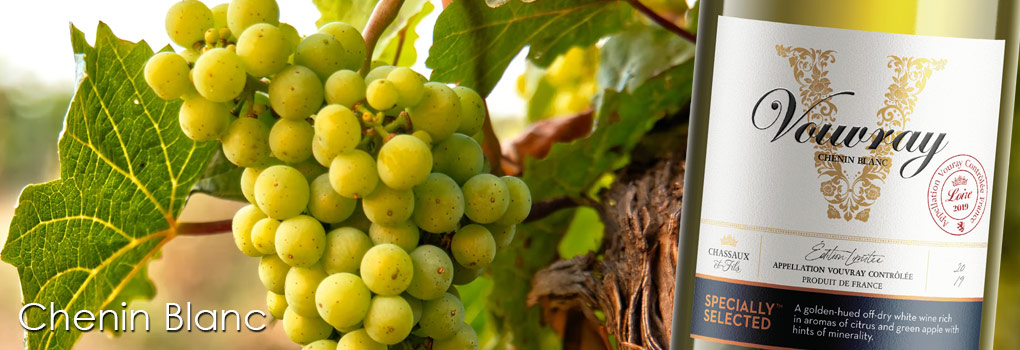
GAMAY:
Gamay is a red wine grape varietal used to make vibrant red wines, predominantly grown in the Beaujolais region of France. Its full name is Gamay Noir à Jus Blanc, and has been known and recorded as a distinct varietal for over 600 years, often referred to as Gamay Noir.
The Gamay grape is thought to have appeared first around the 1360's in the village of Gamay, south of Beaune - Burgundy. The varietal brought relief to the grape-growers of the region, following the decline after the Black Death.
Gamay ripened two weeks earlier than Pinot Noir and is less difficult to grow. It also crops at large levels, producing a more fruit driven style of wine. DNA analysis has shown the genetic parents of Gamay are Pinot Noir and Gouais Blanc.
In 1395, the Duke of Burgundy - (known as Phillip the Bold), ordered Gamay vines to be torn out and banned the grape varietal from being planted in the vineyards of Burgundy, so as not to compete with his favoured Pinot Noir. Although this decree nearly eradicated Gamay altogether, it found a new home in Beaujolais.
Gamay is a very vigorous vine, though with very shallow roots in the regions alkaline soils, results in vine stress - along with a relatively high level of natural acidity. The grapes acidity can be softened through 'carbonic maceration', a process that also gives the wine riper aromas and flavours, sometimes described as cranberries and pomegranate.
Gamay wines are typically light-medium bodied, with bright red fruit characters. Wines crafted with more fruit are ideal to be enjoyed with little age, where wines that have early flavours of sharp cherries, red peppers, dried fruits and red currants benefit from ageing. Gamay is well suited to the terroir of Beaujolais, plus it can be found grown quite successfully in the Loire Valley around Tours - where it is regularly blended with Cabernet Franc and Côt - (the local name for Malbec). The Loire Valley wines have be described has having similarities to Crus Beaujolais, with red berries and the signature fresh-peppery note.
Gamay is also the grape used for Beaujolais Nouveau, produced exclusively from selected vineyards in southern Beaujolais where the grapes natural lively personality is ideal for the unique winemaking process of carbonic maceration.

MALBEC:
Malbec is a red wine grape varietal that was once a major component in the great wines of Bordeaux (where it is known as Côt and Côt Noir), but more recently it has also been relegated to a minor role. It has been steadily replaced by Merlot and the other two Cabernet varietals in most areas of Bordeaux. In the Médoc, Malbec is typically used to add colour and tannin to the combined wine blend.
It has been said, if Petit Verdot was easier to grow, Malbec might have even less area under vine than it does today. Malbec does play the key role in the small appellation of Cahors (south-west France), where it is known as Auxerrois. In Cahors, the wines are dark in colour, with an earthy tobacco aroma, rustic, full and engaging on the palate with good length.
Argentina is now regarded as the new home of Malbec. In the wine region of Mendoza, under the shadow of the Andes Mountains, the grape enjoys its vacation from the more moderate climate of the Médoc in Bordeaux - France. Here, there are hot summer temperatures and the grape is left hanging long into the growing season to ripen and soften its firm tannins.
The Malbec grape is a medium skinned grape (in warm climates, thick skinned and at high altitudes) and needs more sun and heat than either Cabernet Sauvignon or Merlot to mature. It ripens mid to late in the season and it can bring very deep colour, confident tannins, and a characteristic plum-like flavour component that adds complexity to red blends.
The best of Argentine Malbecs' are deep inky reds with juicy dark fruit and soft tannins, making them very approachable, early drinking styles. Malbec is also found in Chile, Australia, South Africa and New Zealand (e.g. Waiheke Island, Hawke's Bay and Gisborne) have the required climate and are producing some interesting examples. Traditionally it has been and still is being used as a blending grape in classic Bordeaux-style red blends - *(being one of the famous 5 red grape varietals) - enjoy.
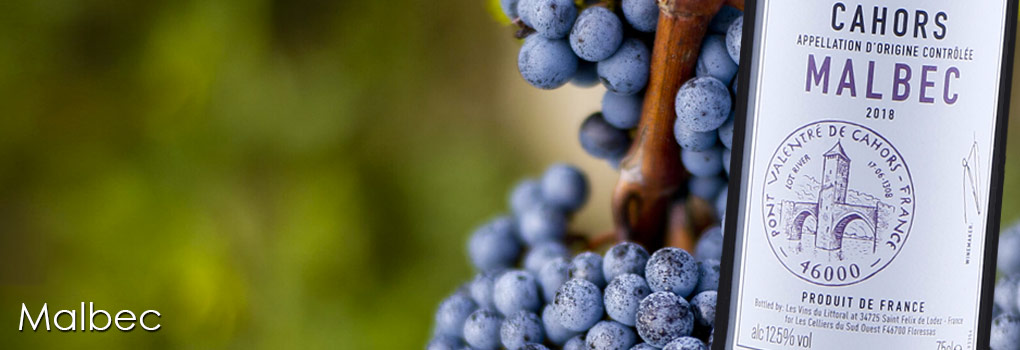
MERLOT:
Merlot is a red wine grape varietal with its origins in Bordeaux - France. DNA testing leadings experts to believe that Merlot is an offspring of Cabernet Franc and is a sibling of Carmenère and Cabernet Sauvignon. It is lower in tannins and makes red wines that mature faster and are generally softer in texture. Merlot is often blended with Cabernet Sauvignon in order to soften the blend. At its best, Merlot makes a wine that is dry, generous in flavour and smooth as it finishes on your palate.
Merlot is able to ripen in regions that are cooler than those required for example Cabernet Sauvignon. Though Merlot is more susceptible to fungus and mold diseases and therefore can be a bit harder to grow.
Merlot varies widely in quality around the world depending on the location and winemakers style. This red varietal was first known for its success in the Saint Émilion and Pomerol areas of Bordeaux. Château Petrus is the stellar example of fine Merlot.
Along with Cabernet Sauvignon, Cabernet Franc, Malbec and Petit Verdot, Merlot is one of the key 5 grapes in Bordeaux wines, where it is the most widely planted varietal. Merlot is also one of the most popular red wine varietals in many countries. This flexibility has helped to make it one of the world's most planted red grape varietals.
Merlot usually has ripe berry components in the bouquet. Its wines tend to be soft, fruity and smooth in texture. Select premium quality Merlot wines can have long aging potential, but most are ready to be enjoyed with in 2 to 8 years. Merlot is enjoying a surge in popularity and new areas are being planted in many major wine producing regions.
Merlot should be served at approximately 15°- 17°Celsius. As when wine alcohol reaches 22°- 23°C (the average room temperature, and even warmer in summer), it is likely to cause an unpleasant sharpness in the taste. Cooling the bottle for approximately 10-15 minutes (but not much longer) in a fridge can be a good way to reach the desired serving temperature in summer time and warmer climates.
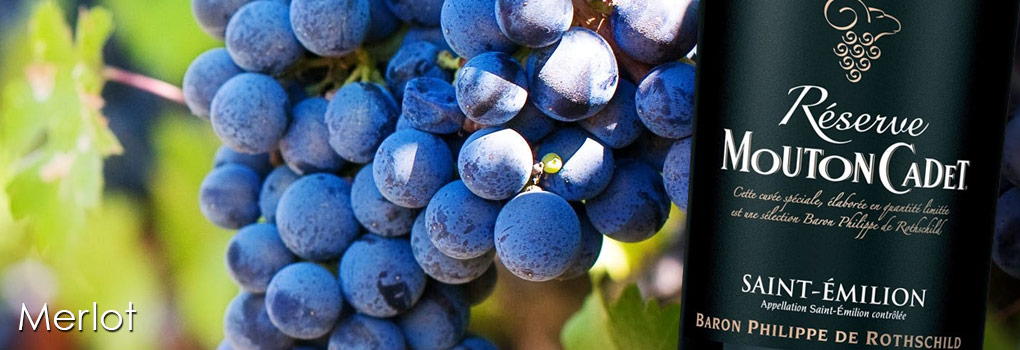
PETIT VERDOT:
The Petit Verdot is a red wine grape varietal - 'origins are still not completely known', through its recent history is in Bordeaux of southern France. It is one of the six approved grapes for making red wines in the Bordeaux region. Petit Verdot is thought to have been in the Medoc wine area well before Cabernet Sauvignon and probably more widely grown. Today - Petit Verdot is now the least grown of the Bordeaux red wine grape varietals.
Typically used as you would a spice in cooking, because a little goes a long way. Petit Verdot will often be blended as little as 1% - 5% of the total wine in order to take advantage of some of its most dominant characteristics. Petit Verdot has a deep purple colour and a strong tannin structure - so used to impart these features to the final wine into which it is blended.
Because Petit Verdot tends to ripen late in the growing season and is often lost to rains during harvest time, it is following another red varietal Carménère, into near extinction in the Bordeaux wine region. The name Petit Verdot means 'little green one', a reference to its size and difficulties of growing and achieving physiological ripeness.
When it does ripen, when added in small amounts, it does add excellent, complimentary tannin, colour and flavour to the other red varietals in the blend. It has attracted attention among winemakers in the New World, where it ripens more reliably and has been made into single varietal wine. Planted in suitable climes and properly cultivated, the fruit develops in relatively small winged clusters, loosely filled with round, dark red-to-black, relatively thick-skinned berries.
Petit Verdot's reluctant cooperation in the vineyard is likely why it is not more prevalent. The aroma of Petit Verdot includes cigar box, smoke, leather and earthy tones. In addition to violet and leather, Petit Verdot flavours can include peppers, spices, smoke and herbs.
Petit Verdot is not recommended for those who enjoy a fruit driven wine: plus long aging in oak barrels can also fade its fruit flavours. Petit Verdot is also grown in Italy, Spain, California, Australia, Chile and Argentina with good success, and can also be found in selected sites on Waiheke Island in New Zealand.
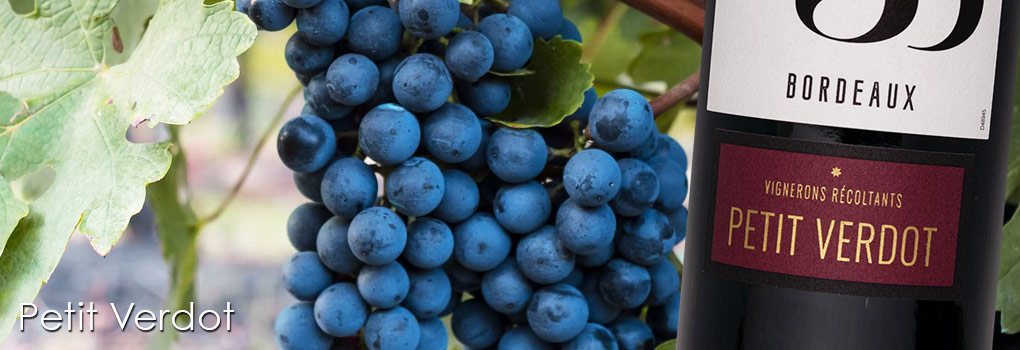
PINOT MEUNIER:
Pinot Meunier is a red wine grape varietal most noted for being one of the 3 main varietals used in the making of Champagne (the other two being Pinot Noir and the white grape Chardonnay). Until recently, Champagne makers did not acknowledge Pinot Meunier, preferring to emphasize the use of the other noble varietals. But more recently Pinot Meunier is respected for the character and detail it contributes to Champagne.
With it origins tightly linked with northern France - Pinot Meunier covers approximately 30% of the Champagne vineyard area, particularly planted in the cooler north facing valleys. The name Meunier (French) / muller (German), or 'miller', is taken from the downy, floury aspect of the underside of the vine's leaves.
In the early 1990s, research conducted by plant geneticist Carole Meredith at the University of California at Davis revealed a common heritage between Pinot Meunier and a number of other grape varietals. Based on DNA, she concluded that an original Pinot prototype and Gouais Blanc are the parents of Pinot Meunier and 15 other Gallic varietals, including: Chardonnay and Pinot Noir.
Pinot Meunier's overriding advantage is its resistance to frost and coulure - (the failure of the flowers to develop into berries). It buds and flowers late and ripens early, also an advantage in cold growing areas. Well-suited to chalky clay or loam soils, it is susceptible to rot due to the compact nature of its bunches. The berries are deep blue and oval and the fruit high in acidity, moderately high in alcohol, low in tannin and full of sweet fruit flavour.
In the blend of Champagne and other classically styled sparkling wines, Pinot Meunier primarily contributes fruitiness and subtle detail to the cuvée. On its own it does not age well, but does yield bright, fresh, fruity light red and rosé wines of crisp acidity and slightly smoky character when produced as a still wine.
Pinot Meunier is grown principally in Australia, Germany, Austria, Switzerland, and the Loire Valley and also grown in Alsace, across Eastern Europe and in New Zealand.
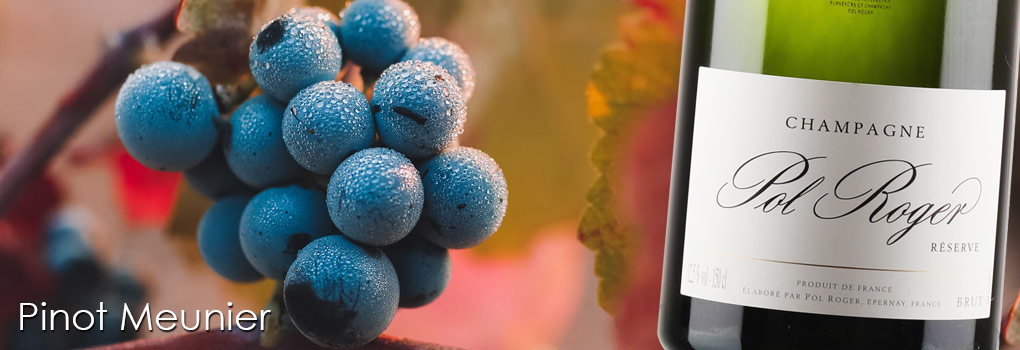
PINOT NOIR:
Pinot Noir is often described as being a 'difficult' red grape varietal to grow, then to work with in the winery and to find truly great examples. But fans are passionate about this varietal, as expressed by the dialogue between Miles and Maya in the 2004 movie 'Sideways'.
The reputation that gets Pinot Noir so much attention, however, is owed to the wines of Burgundy France. For most of wine history, this 3.5km-wide, 50km-long stretch of hills, called the Cote d'Or ('Slope of Gold'), is the only region to achieve consistent success from the Pinot Noir grape vine. The quality of Burgundy is due to a number of factors. Its vineyards slope gently down toward the east, providing the vines with moderate long sun exposure, yet avoiding the afternoon heat. The marbled heavy soils sit on gravelly sandy loam, along with being calcareous, and in parts very stony providing ideal drainage.
Pinot Noir seems to reflect more pronounced 'Gout de Terroir', or 'flavour of the soil', than other red grape varietals, making vineyard and site selection critical.
There are some 200 recognised clones (genetic variants) of Pinot Noir in the Burgundy region. There is estimated as many as *800 clones of Pinot Noir worldwide. Nearly every affliction known to affect grape vines is common among Pinot Noir vineyards. There is one component in which Pinot Noir is naturally quite rich, three to four times higher than other red varietals - and that is 'resveratrol'. While this may not affect the wines enjoyment, it may draw the attention of a few health-conscious consumers.
Great Pinot Noir creates a lasting impression, its aroma is often one of the most complex of all varietals and can be intense with a dark cherry aroma, frequently accented by a pronounced nuance of cinnamon and other dried herbs. Ripe vine tomatoes, mushrooms and forest floor are also common descriptors for ripe Pinot Noir. Medium-full-bodied and engaging but not heavy, can have a good level of alcohol, yet neither high in raw acidity or tannins, with substantial layers of flavour despite its delicate nature. The most appealing character of a quality Pinot Noir may be its soft, velvety texture. When physiologically ripe and crafted correctly, Pinot Noir is like liquid silk.
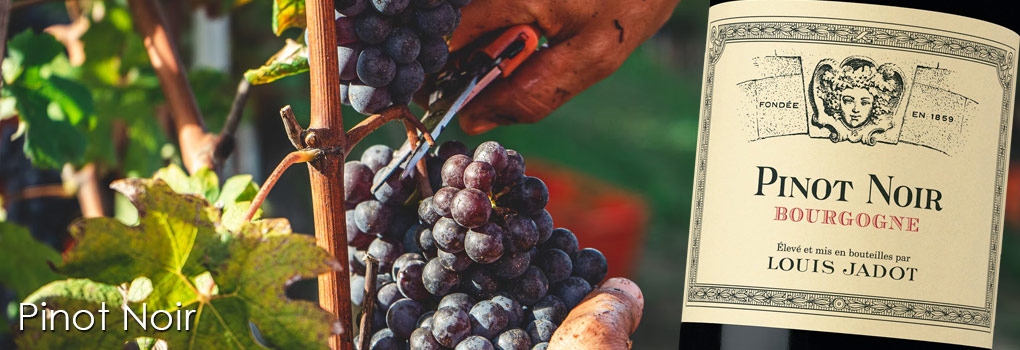
SAUVIGNON BLANC:
Sauvignon Blanc is a white wine grape, that can trace its origins too 2 wine regions in France - the Loire Valley and Bordeaux. But it was the style of wine made here in New Zealand in the 1980's that got people to take notice again and enjoy this expressive white varietal.
When it comes to making Sauvignon Blanc, winemakers can harvest the grapes at various intervals for different blending characteristics that the grape can impart depending on its ripeness. At its most unripe stage, the grape is high in malic acid. As it progresses towards ripeness the grape develops red & green capsicum flavours and in warmer climates, leading towards topical fruits like pineapple. Grapes grown on large planted sites may exhibit different levels of ripeness and flavours across the vineyard.
This can be caused by unevenness in the land, soil types, temperature range, angle of sunlight and wind - all giving a unique flavour profile to the resulting wine. The final style of Sauvignon Blanc can be greatly influenced by decisions made during the winemaking process. One decision is the amount of contact that the 'must' has with the skins of the grape. Some winemakers, like in the Loire Valley of France, intentionally leave a small amount of must to spend time in contact with the skins for later blending. Other winemakers (e.g. several in new world regions) generally avoid any contact with the skins, due to the reduced aging ability of the resulting wine.
Another important decision is the chosen temperature of fermentation. French winemakers prefer slightly warmer fermentation temperatures (around 16º- 18ºC) that bring out the mineral flavours in the wine. While New World winemakers (i.e. New Zealand, Chile) prefer slightly cooler temperatures (around 12º- 15ºC) to bring out more fruit and tropical notes on both the nose and on the palate.
A small number of Loire Valley winemakers will put the wine through malolactic fermentation, a practice also performed here in New Zealand. Oak barrel aging can have a pronounced effect on the final wine, with the oak rounding out the flavours and softening the naturally high acidity of the grape.
Some winemakers, like those in New Zealand and more recently in the Sancerre region, prefer stainless steel fermentation tanks over oak barrels with the intention of maintaining the sharp focus, aromas and flavour intensity of Sauvignon Blanc.
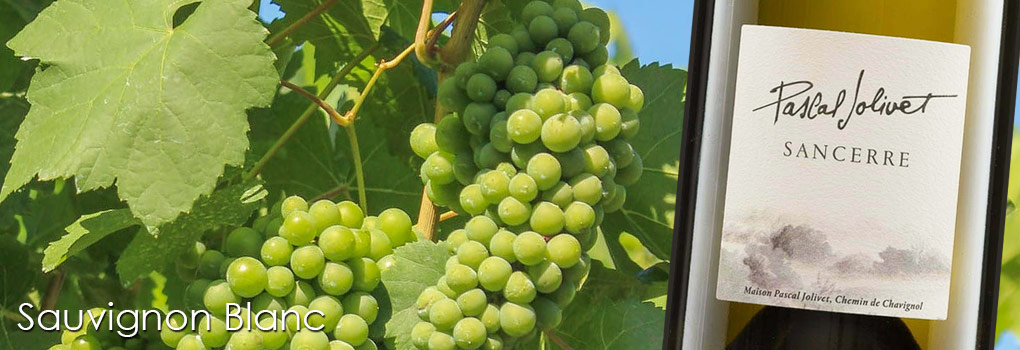
SEMILLON:
Semillon is a white wine grape varietal with a long history linked to France - where it is used to make both dry and renowned sweet white wines. The exact origins of Semillon are still being determine, though it has a strong connection the south-west France. It was once thought to be the most planted grape in the world, although this is no longer the case.
Semillon, which is relatively easy to cultivate, and is a vigorous producer of grapes. It is fairly resistant to disease, though extremely susceptible to Botrytis (also known as noble rot). The grape ripens early, when in warmer climates it acquires a pinkish hue to the skin. Since the grape has a thin skin, there is also a risk of sunburn in hotter climates; though it is best suited to areas with warm days and cool nights.
The Semillon grape when ripe has low acidity and a rich texture - wines produced tend to age for a long time. Along with Sauvignon Blanc and Muscadelle, Semillon is one of the 3 white grape varietals allowed in the Bordeaux wine region. When used to make a 'dry' wine, it is referred to as Bordeaux Blanc and is permitted to be made in the AOP of Pessac-Leognan, Graves, Entre-deux-mers and other regions. However, when used to make the 'iconic sweet' white wines of Bordeaux (i.e. Sauternes and Barsac) it is often the dominant varietal, and this is where Semillon's strengths come to the fore.
Due to the declining popularity of the varietal in other areas, fewer clones are cultivated - causing producers to project a future shortage of quality wine. Back in 2008 - 17 Bordeaux wine producers, including Chateau d'Yquem, Ch. Olivier, Ch. Suduiraut and Ch. La Tour Blanche, formed an association to grow their own clones.
Semillon's spiritual home is in the south-west of France - particularly Bordeaux, where it is the most widely planted white varietal. Outside France, the Hunter Valley of Australia is Semillon's adopted home, and here it makes possibly Australia's most interesting white wines. The best examples can carry on evolving for decades. Semillon / Sauvignon blends are common in Western Australia, where the two grapes synergize to make some stunning wines. Plus one can not forget - De Bortoli's 'Noble One' Botrytis Semillon.
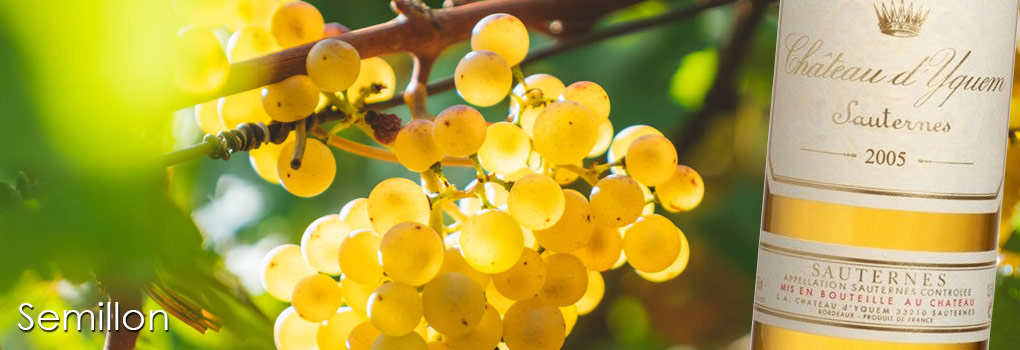
SYRAH:
In plain and simple terms - Syrah and Shiraz are both the same grape varietal (originally) - two sides of the same coin. But today the name gives you a clue to the 'Terroir' (aspect, location, climate, soil) that the wine has come from and the style in which it has been made.
Syrah is a red grape varietal traditionally grown in the Rhône Valley of south-eastern France. Since then it has spread to many places around the world including California, Argentina, Chile and more recently, South Africa and New Zealand.
The place that has taken the grape varietal to its heart is Australia. But in true Australian fashion due to climate, soil and culture the wines have taken on a new personality, character and even a new name.
The difference in Syrah & Shiraz stems from the different expression and reflection of the Terroir, vintage as well as other viticultural practices, and also winemaking techniques chosen. The Syrah / Shiraz grape was once thought to have originated in Persia (plus many other romantic stories and journeys over the centuries), but recent research, DNA testing indicates the grape is a native of the Rhône Valley, in France. In 1999 they found Syrah to be the offspring of two obscure grapes from southeastern France, Dureza and Mondeuse Blanche. Syrah it is best known for its usage in Hermitage, in the northern Rhone.
If an Australian winemaker was to label the wine Shiraz, you can expect a full-bodied, rich, intensely ripe, fruit driven style of wine, with high alcohol (15%+ Alc.) - the Australian way.
'Syrah' on the other hand tends to emphasize earth and subtle spice and slightly more delicate notes due to a cooler and longer growing season found in France and also selected regions in New Zealand.
Definitely try them both; they each have their rightful place in your cellar and on your table and both are interesting and rewarding when matched with the right cuisine and when served in the correct Riedel stemware. Both Syrah and Shiraz can age extremely well, plus if enjoyed in their youth, will appreciate as with all well made red wines - decanting for a period of time before serving.

TANNAT:
Tannat is a red wine grape varietal, historically grown at the foothills of the Pyrenees Mountains in south-western France in the Madiran AOP. Having been grown in that region since the 17th and 18th centuries. It is also grown in Uruguay, Argentina, Australia, Brazil, Peru, and in Italy's Puglia region where it is used as a blending varietal.
Tannat wines produced in Uruguay are usually quite different in character from Madiran expressions - typically being lighter in body and lower in tannins. It is also used to make Armagnac and full-bodied rosé wine. In France, efforts to solve the harsh tannin nature of the grape varietal, lead to research and the development of the winemaking technique now known as 'micro-oxygenation' - by the Madiran winemaker Patrick Ducournau.
Tannat - as mentioned, is notable for its very high levels of natural tannins and is often blended with lighter style red varietals - along with Cabernet Sauvignon and Cabernet Franc to soften their astringency (grown in cool conditions) and to give them more balance. A French Tannat wine is characterised by its firm, tannin structure with smoky-oak and plum aromas, a dried spice finish and the ability to age well.
French Kings accepted Madiran wines as payment for taxes. Madiran appellation laws mandate that Tannat be blended with Cabernet Sauvignon or Cabernet Franc, but producers have recently begun receiving notable press for their 100% Tannat Madiran wines.
Tannat continues to be grown in the Basque country, most notably in the small appellation of Irouleguy, on the Spanish border. In 1870, Basque immigrants took the grape to Uruguay, where it has adapted extremely well. Today it is often blended with Pinot Noir and Merlot and is made in a variety of styles including those reminiscent of Port and even Beaujolais.
From Uruguay the vine spread to Argentina and from there flying winemakers promoted the grape's growth in California at the end of the 20th century. It has since become the national red grape varietal of Uruguay, accounting for approximately one third of all wine produced in the country; more Tannat is grown in Uruguay than in the varietal's native France.
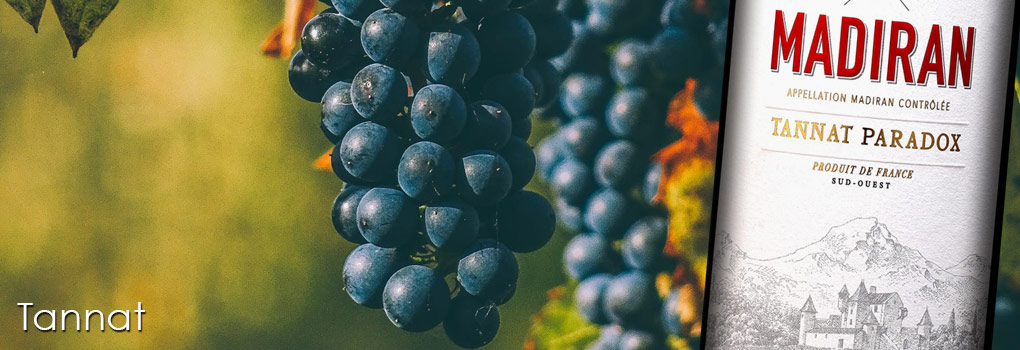
VIOGNIER:
Viognier - (pronounced: vee-ohn-yay) - is a white wine grape varietal, once fairly common across France - now grown almost exclusively in the Northern Rhône Valley. In 1950's & 60's, the grape almost became extinct when there was only 10 hectares planted.
Viognier can be a difficult varietal to grow because it is prone to powdery mildew. It has low and unpredictable crop yields and should only be picked when fully physiologically ripe. The grape prefers warmer environments and a long growing season, but with careful management can also produce well balanced, delicate wines in cooler areas.
The age of the vine also has an effect on the quality of the wine produced, as Viognier vines start to hit their peak after 15 - 20 years (Northern Rhône have vines 70+ years of age).
The majority of the recent plantings outside of the Northern Rhône are less than 15 - 20 years old, which means their potential has yet to be achieved. Although having low-acidity Viognier wines do not require heavy use of oak to provide balance, a delicate use of oak can enhance the overall flavour, mouthfeel and length.
In the Rhône region, the grape is often blended with Roussanne, Marsanne, Grenache Blanc, and Rolle. In the Côte-Rôtie AOC - red wine blends are permitted to include up to 20% Viognier, though most winemakers add no more than 5%. One of the benefits of adding Viognier to the process of co-pigmentation / fermentation - the Viognier can help stabilize the colour of red wine and give a more rounded mouthfeel.
Viognier is meant to be consumed relatively young and typically loses its aroma as it ages. Depending on the winemaking style the wine can often hit its peak after one year of age - though some can hold at a high quality up to ten years.
Viognier is best known for its apricot, peach and subtle herb flavours, together with high alcohol and low acidity. The highly aromatic and fruit forward nature of the grape allows Viognier to pair well with spicy foods such as Thai or Vietnamese cuisine. The subtle floral notes in some wines made of Viognier and vinified without the use of oak make them a perfect match with sushi and sashimi. Viognier pairs equally well with shellfish, such as scallops, crab, prawns and calamari are ideal combinations - enjoy.
